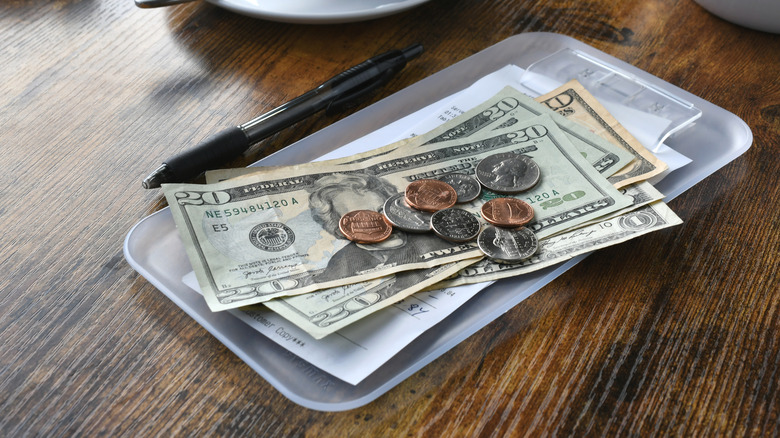What Diners Need To Know About The 'No Tax On Tips' Rule Coming To Restaurants
Included in President Trump's One Big Beautiful Bill Act is a provision that allows certain categories of workers to deduct up to $25,000 in what are classified as "qualified tips" per year. This includes tipped workers like servers at restaurants. These employees will be eligible to do so between 2025 through 2028, but that means there's likely going to be a change in how things are currently done at most establishments.
This is because mandatory gratuities (sometimes considered "service charges" at some restaurants), the kind you often see tacked onto receipts for larger parties of six and up, don't count as qualified tips in the new provision; meaning, if service workers want to write off those tips for tax purposes, that auto-gratuity will have to be removed from group dining receipts in favor of a standard, diner-determined tip. On the back end, restaurant operators will now need to put all tips through payroll systems in order for their employees to reap the benefits of the tax write-offs. Those line items once labeled as "service charges" won't count as tips, even if they are passed directly to employees, meaning they're taxable and less attractive for the person receiving them.
What you might see on group dining receipts in the future
Basically, it comes down to whether or not the customer is able to adjust the amount of gratuity they leave for the employee. So in the case of large party dining, you may just see a few lines that show recommended tip amounts but have the diner write in how much they'd like to pay. If you're using something like a digital tablet with pre-set percentages to tip, those point of sale systems will also need an option for the customer to customize how much they'd voluntarily like to give. Without that last option available, it wouldn't be classified as a qualified tip for tax purposes.
As it stands, none of this would be too big of a change from a diner's perspective aside from the large party dining scenario. But if you're an employee, you're definitely going to want to watch how your tips are broken down in payroll to ensure you get the most out of your $25,000 tax-free amount. The employees who are keeping close tabs on these details are likely going to seek employers who set up transparent systems in favor of their workers' bottom line. After all, nobody actually enjoys paying taxes. None of this is set in stone quite yet, as the IRS is still working on the finer details. Just know that in some cases, the way your tips are handled may look just a tad bit different in the future.

